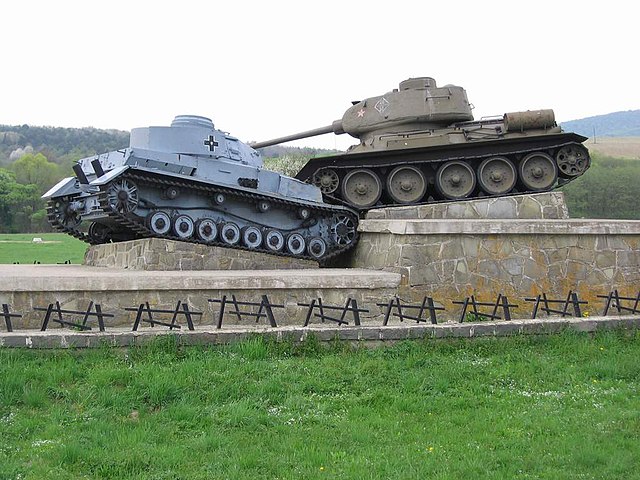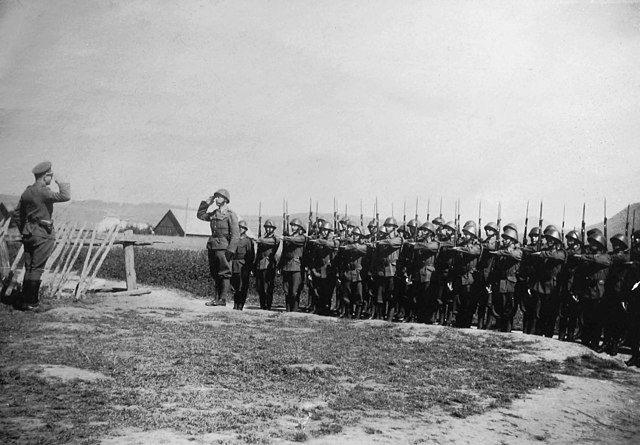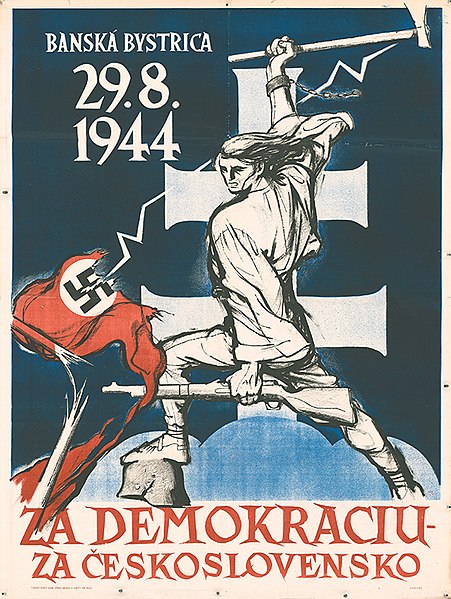The Battle of the Dukla Pass, also known as the Dukla, Carpatho–Dukla, Rzeszów–Dukla, or Dukla–Prešov offensive, was the battle for control over the Dukla Pass on the border between Poland and Slovakia on the Eastern Front of World War II between Nazi Germany and the Soviet Union in September–October 1944. It was part of the Soviet East Carpathian strategic offensive that also included the Carpathian–Uzhgorod offensive. The operation's primary goal, to provide support for the Slovak rebellion, was not achieved, but it concluded the full liberation of the Ukrainian SSR.
A monument to the battle on the Slovak side of the Dukla Pass.
The Slovak National Uprising was a military uprising organized by the Slovak resistance movement during World War II in central Slovakia. This resistance movement was represented mainly by members of the Democratic Party, social democrats, and communists. It was launched on 29 August 1944 from Banská Bystrica in an attempt to resist German troops that had occupied Slovak territory and to overthrow the collaborationist government of Jozef Tiso. Although the resistance was largely defeated by German forces, guerrilla operations continued until the Red Army, Czechoslovak Army and Romanian Army occupied the Slovak Republic in 1945.
Convoy of Slovak resistance army vehicles near Kelemeš (today part of Prešov)
Slovak mutineer forces in 1944
Pro-Slovak National Uprising propaganda, 1944
Ján Golian, one of the main organizers and commander of the rebel forces.





